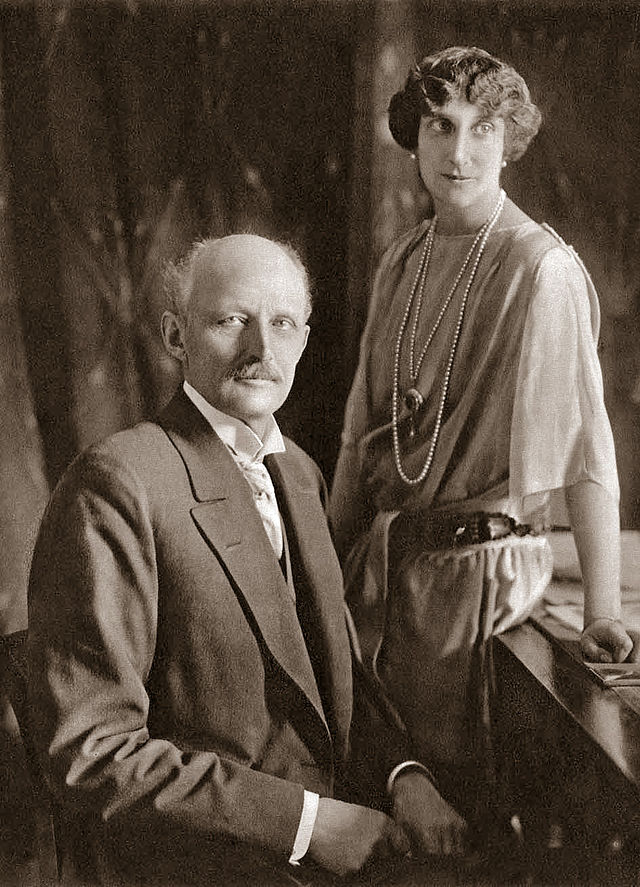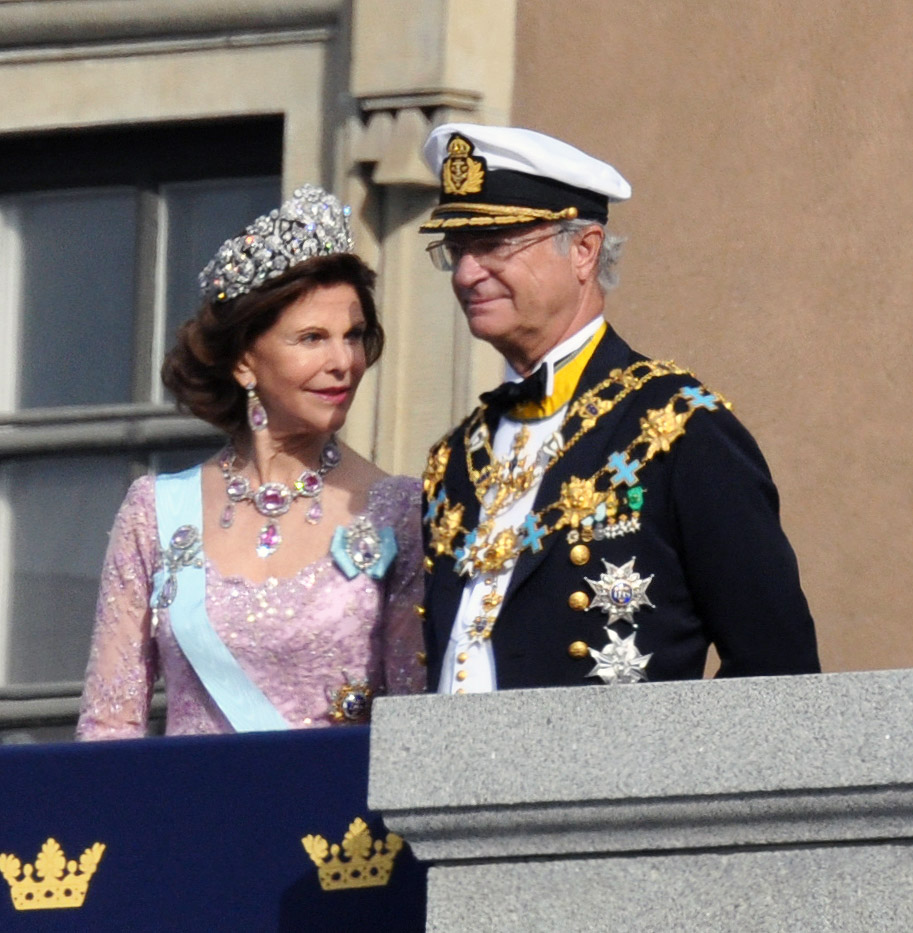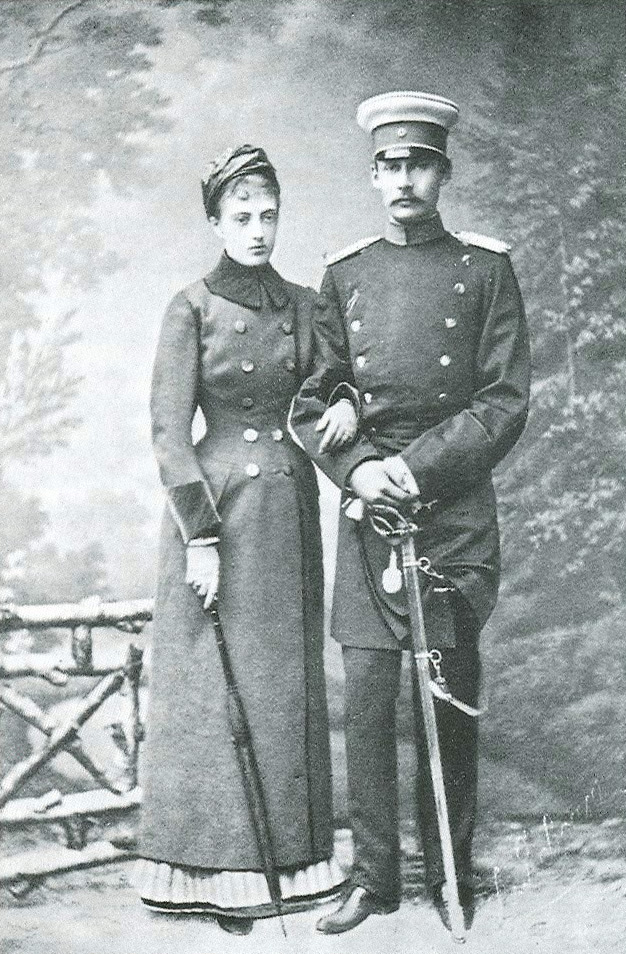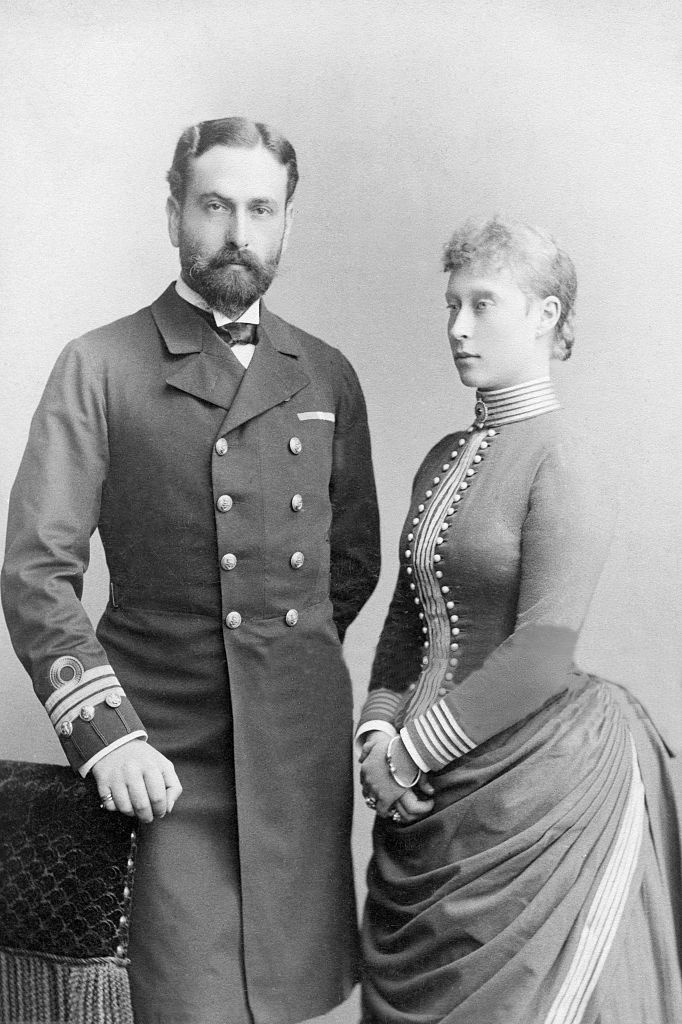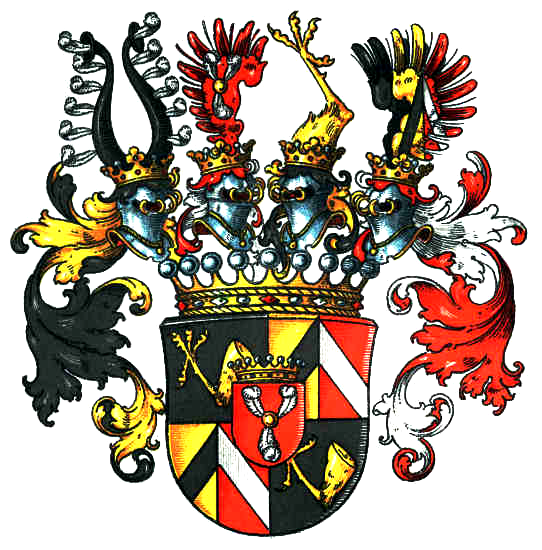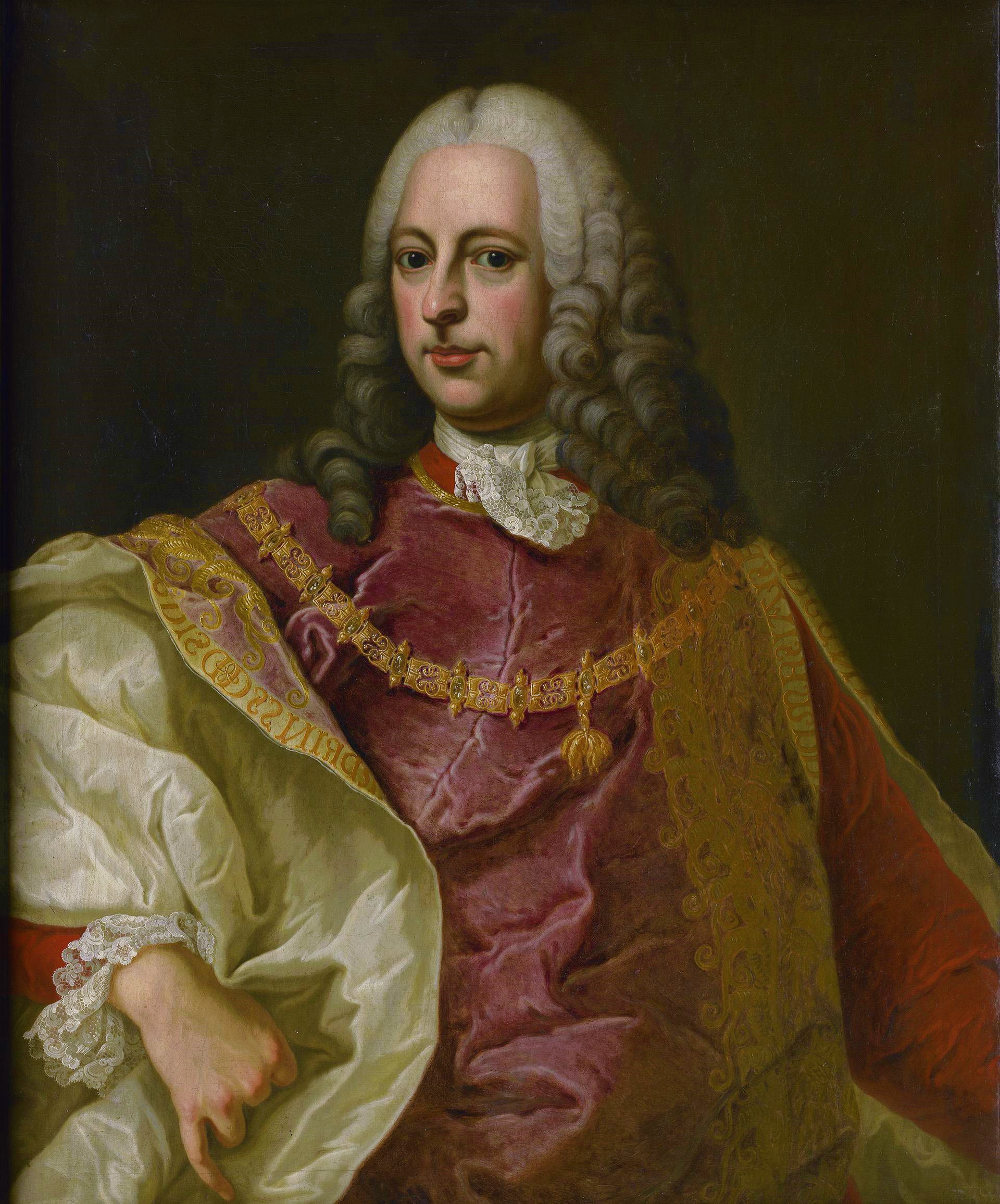by Susan Flantzer
© Unofficial Royalty 2023

Leopold I, Holy Roman Emperor; Credit – Wikipedia
The Holy Roman Empire was a limited elective monarchy composed of hundreds of kingdoms, principalities, duchies, counties, prince-bishoprics, and Free Imperial Cities in central Europe. The Holy Roman Empire was not really holy since, after Holy Roman Emperor Charles V in 1530, no emperors were crowned by the pope or a bishop. It was not Roman but rather German because it was mainly in the regions of present-day Germany and Austria. It was an empire in name only – the territories it covered were mostly independent each with its own rulers. The Holy Roman Emperor directly ruled over only his family territories, and could not issue decrees and rule autonomously over the Holy Roman Empire. A Holy Roman Emperor was only as strong as his army and alliances, including marriage alliances, made him, and his power was severely restricted by the many sovereigns of the constituent monarchies of the Holy Roman Empire. From the 13th century, prince-electors, or electors for short, elected the Holy Roman Emperor from among the sovereigns of the constituent states.
Frequently but not always, it was common practice to elect the deceased Holy Roman Emperor’s heir. The Holy Roman Empire was an elective monarchy. No person had a legal right to the succession simply because he was related to the current Holy Roman Emperor. However, the Holy Roman Emperor could and often did, while still alive, have a relative (usually a son) elected to succeed him after his death. This elected heir apparent used the title King of the Romans.
Learn more at Unofficial Royalty: What was the Holy Roman Empire?
********************
Leopold I, Holy Roman Emperor (reigned 1658 – 1705) was also King of Hungary (reigned 1655 – 1705), King of Bohemia (reigned 1656 – 1705), Archduke of Austria (reigned 1657 – 1705), King of Croatia (reigned 1657 – 1705), Duke of Teschen (reigned 1657 – 1705), King of the Romans (reigned 1658 – 1705), Archduke of Further Austria (reigned 1665 – 1705), and Prince of Transylvania (reigned 1692–1705).
Leopold Ignaz Joseph Balthasar Franz Felician was born in Vienna, then in the Archduchy of Austria, on June 9, 1640. He was the fifth of the six children and the fourth of the four sons of Ferdinand III, Holy Roman Emperor and the first of his three wives, also his first cousin, Maria Anna of Austria. Leopold’s paternal grandparents were Ferdinand II, Holy Roman Emperor and his first wife, Maria Anna of Bavaria. His maternal grandparents were King Felipe III of Spain and Margarete of Austria. Leopold was the first cousin and contemporary of King Louis XIV of France. Their mothers were half-sisters.
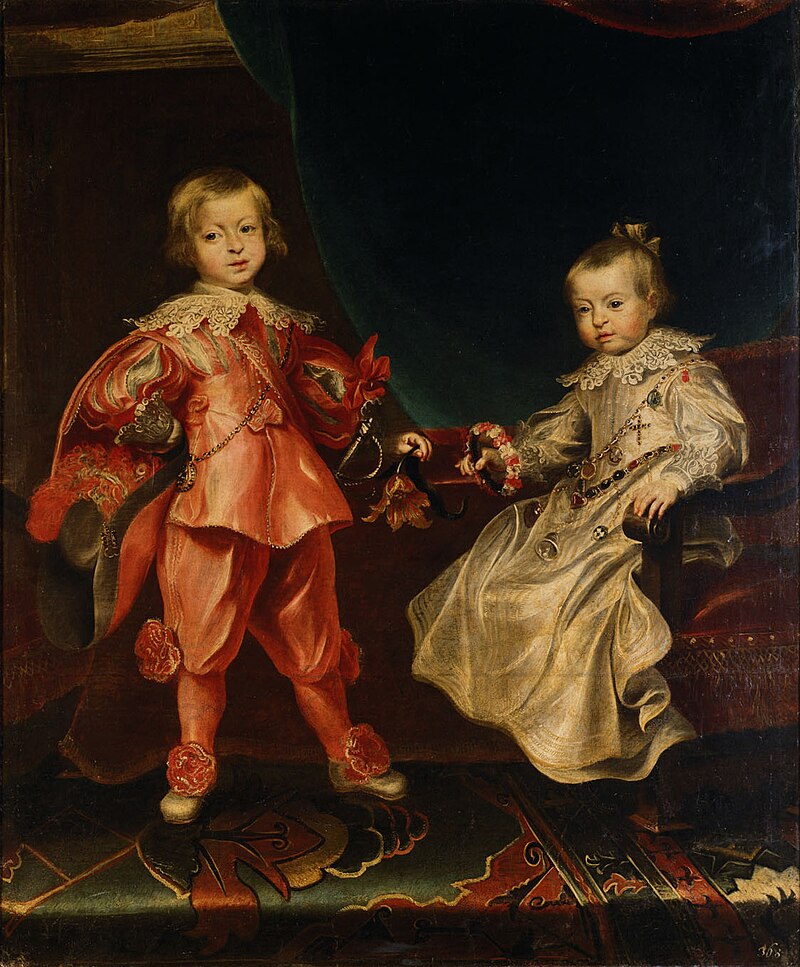
Leopold’s siblings Ferdinand and Mariana; Credit – Wikipedia
Leopold had five siblings. His three elder brothers predeceased him, with two dying before he was born, and his youngest sister died in infancy.
- Ferdinand, King of the Romans (1633 – 1654), unmarried, died from smallpox
- Archduchess Mariana of Austria (1634 – 1696), married (second wife) her maternal uncle Felipe IV, King of Spain, had five children, including Carlos II, King of Spain and Leopold’s first wife, Margarita Teresa of Spain
- Archduke Philipp August of Austria (1637 – 1639), died in early childhood
- Archduke Maximilian Thomas of Austria (1638 – 1639), died in infancy
- Archduchess Maria of Austria (born and died 1646), died in infancy
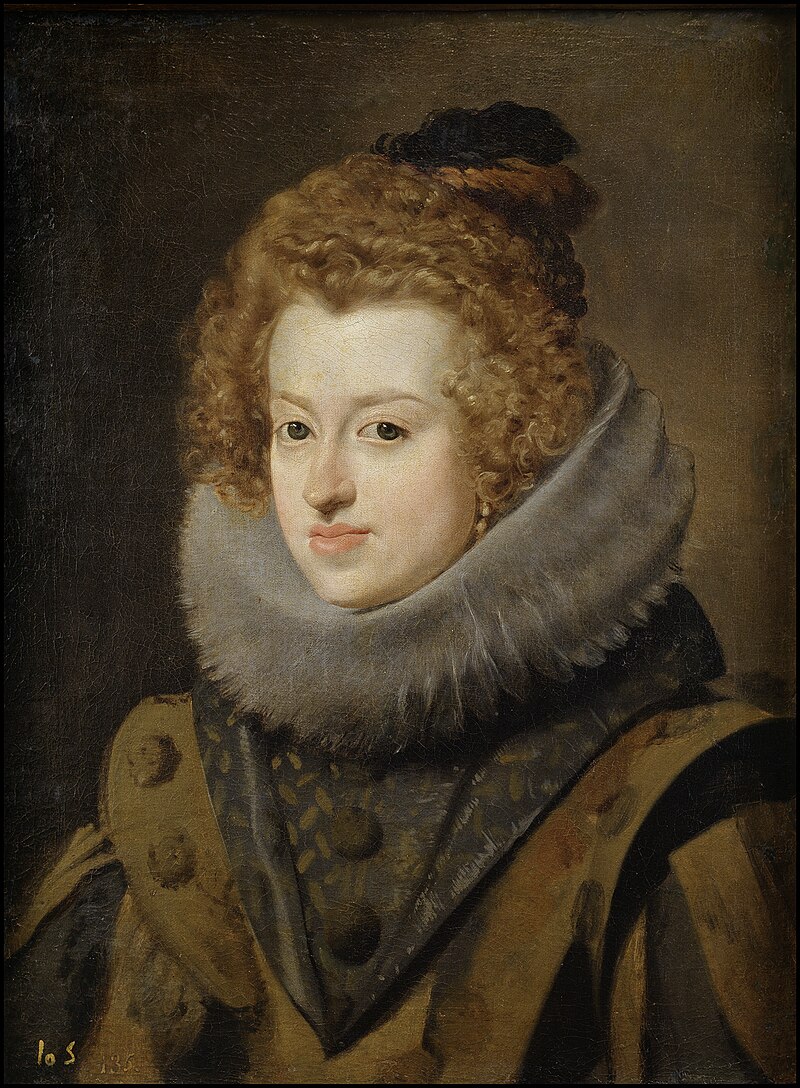
Leopold’s mother Maria Anna of Austria; Credit – Wikipedia
When Leopold was six years old, his 39-year-old mother, Empress Maria Anna, pregnant with her sixth child, suddenly fell ill with a fever, had heavy bleeding, and died on May 13, 1646. Immediately after her death, the unborn child, a girl, was delivered by Cesarean section. She was named Maria after her mother, but lived only a few hours.

Leopold’s father, Holy Roman Emperor Ferdinand III; Credit – Wikipedia
Leopold’s father married two more times. His second wife, 16-year-old Archduchess Maria Leopoldine of Austria, was also his first cousin. Leopold had one half-brother from this marriage, but Maria Leopoldine died giving birth to him.
Leopold had four half-siblings from his father’s third marriage to Eleonora Gonzaga of Mantua, but two died in infancy.
- Archduchess Theresia Maria Josefa of Austria (1652 – 1653), died in infancy
- Archduchess Eleonora Maria of Austria (1653 – 1697), married (1) Michael Korybut Wiśniowiecki, King of Poland, no children (2) Charles Léopold, Duke of Lorraine, had six children
- Archduchess Maria Anna Josepha of Austria (1654 – 1689), married Johann Wilhelm, Elector Palatine, had two sons who both died on the day of their birth
- Archduke Ferdinand Josef Alois of Austria (1657 – 1658), died in infancy
Leopold received an excellent education, studying history, literature, natural science, and astronomy. He became fluent in Latin, Italian, German, French, and Spanish. Like his father, who was very musical and composed numerous sacred and secular pieces of music, Leopold was a patron of music and a composer. His sacred music is his most successful, particularly Missa angeli custodis, a Requiem Mass for his first wife, and Three Lections, composed for the burial of his second wife.
Leopold was not expected to be the heir of his father’s Habsburg hereditary lands or to be elected Holy Roman Emperor. He was receiving ecclesiastical training for a career in the higher clergy of the Roman Catholic Church. However, this changed when his eldest sibling Ferdinand, who had been elected King of the Romans, meaning he would be the next Holy Roman Emperor, died from smallpox at the age of twenty-one. Fourteen-year-old Leopold became the heir apparent of his father’s hereditary lands and the probable next Holy Roman Emperor.
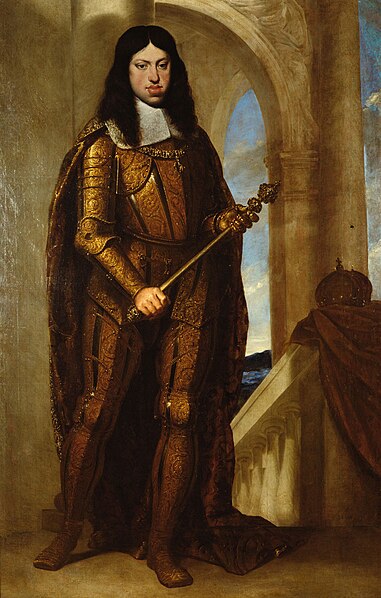
Holy Roman Emperor Leopold I in his coronation armor; Credit – Wikipedia
Over the next several years, Ferdinand III, Holy Roman Emperor gave his son Leopold three of the hereditary lands to rule in his own right, Hungary, Bohemia, and Croatia. Leopold’s father Ferdinand III, Holy Roman Emperor, died, aged forty-eight, on April 2, 1657. Immediately, seventeen-year-old Leopold succeeded to his father’s hereditary lands, but he was not elected Holy Roman Emperor until July 18, 1658. His election had not been a sure thing. Cardinal Jules Mazarin, First Minister of State to Leopold’s first cousin, King Louis XIV of France, wanted Ferdinand Maria, Elector of Bavaria, or some other non-Habsburg to be elected Holy Roman Emperor.

Margarita Teresa of Spain, Leopold’s first wife, niece, and first cousin; Credit – Wikipedia
On April 6, 1663, 23-year-old Leopold was betrothed to twelve-year-old Margarita Teresa of Spain, his niece and first cousin, the daughter of Leopold’s sister Mariana and her maternal uncle Felipe IV, King of Spain. It was felt that Leopold and Margarita Teresa’s marriage between the Spanish and Austrian branches of the House of Habsburg was needed to strengthen the position of both countries, especially against the Kingdom of France.

Leopold’s nephew and first cousin, King Carlos II of Spain: Credit – Wikipedia
The House of Habsburg was notorious for its inbreeding. The Habsburgs had built their empire by marriage, and they wanted to keep the land they had amassed all in the family, so they began to intermarry more and more frequently among themselves. Margarita Teresa’s brother Carlos II, King of Spain, who was also Leopold’s nephew and first cousin, had physical and mental conditions probably caused by the continued inbreeding of the House of Habsburg. In the portrait above, Carlos’ very pronounced Habsburg jaw (mandibular prognathism), a disfiguring genetic disorder in which the lower jaw outgrows the upper jaw, can be seen. Carlos’s Habsburg jaw was so severe that he swallowed his food without thoroughly chewing. Both Leopold and Margarita Teresa also had the Habsburg jaw, as seen in their portraits. Seven of Carlos II’s eight great-grandparents were descended from Juana I, Queen of Castile and León and Aragon and her husband Philip of Habsburg, Duke of Burgundy. While a person in the fifth generation normally has thirty-two different ancestors, Carlos II had only ten different ancestors in the fifth generation. As Carlos II was the brother of Leopold’s first wife Margarita Teresa, the same was true for her.
The marriage between Leopold and Margarita Teresa was delayed because of the bride’s age. The couple was married by proxy in Madrid, Spain, on April 25, 1666. Three days later, Margarita Teresa began her journey to Vienna. She formally entered Vienna on December 5, 1666, and 26-year-old Leopold and 15-year-old Margarita, first cousins, uncle and niece, were married seven days later.
Leopold and Margarita Teresa had four children, but only one survived infancy (see below). Weakened from six pregnancies in six years (four living childbirths and two miscarriages), and four months into her seventh pregnancy, Margarita Teresa died on March 12, 1673, at the age of 21, and was buried in the Imperial Crypt at the Capuchin Church in Vienna. One has to wonder if the inbreeding played a role in the fate of Margarita Teresa, her children, and the three sons of her only surviving child.
Leopold and Margarita Teresa’s children:
- Archduke Ferdinand Wenzel of Austria (1667 – 1668), died in infancy
- Archduchess Maria Antonia of Austria (1669 – 1692), married Maximilian II Emanuel, Elector of Bavaria, had three sons, none survived childhood
- Archduke Johann Leopold of Austria (born and died 1670), died on the day of his birth
- Archduchess Maria Anna Antonia of Austria (born and died 1672), died fourteen days after her birth
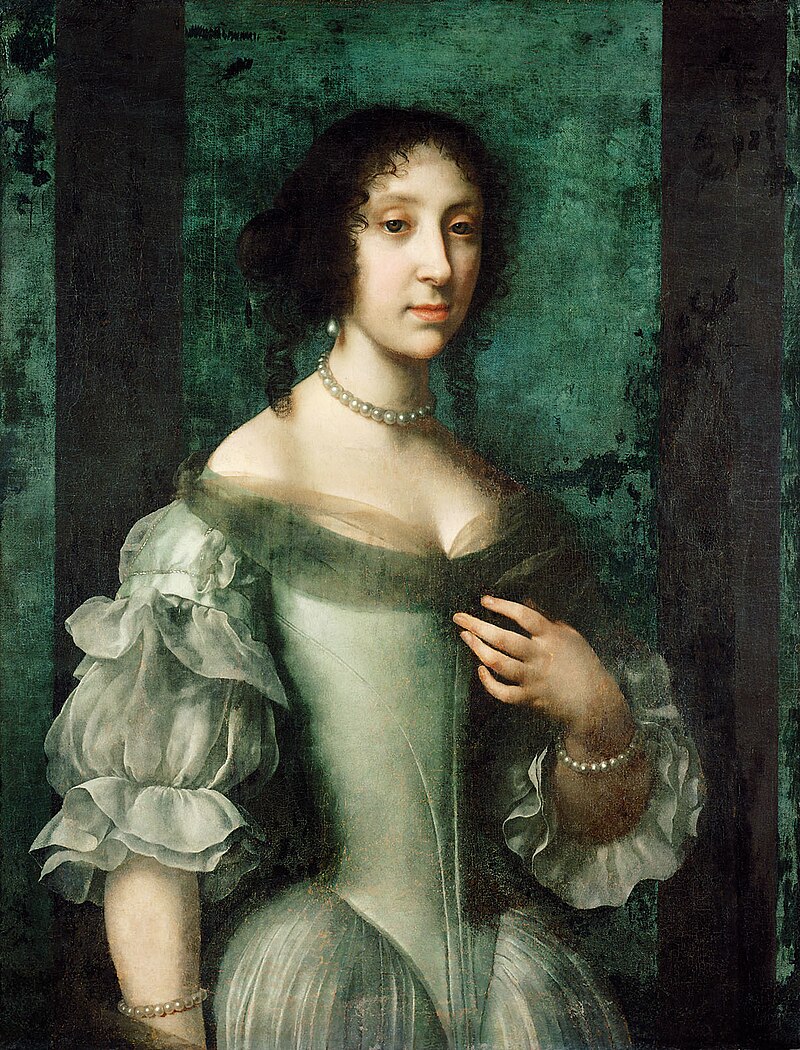
Leopold’s second wife and second cousin, Claudia Felicitas of Austria; Credit – Wikipedia
Because Leopold had no male heirs, he needed to marry again as soon as possible. He opted for 20-year-old Archduchess Claudia Felicitas of Austria, the daughter of Ferdinand Karl, Archduke of Further Austria and Count of Tyrol and first cousin Anna de’ Medici. With the consent of her relatives, Claudia Felicitas immediately accepted the proposal, rejecting other suitors, including the widower James, Duke of York, the future King James II of England. However, with Claudia Felicitas, there was more inbreeding. They were second cousins four times over. Leopold’s parents and Claudia Felicitas’ parents were all double first cousins with each other. All four had the same pair of grandparents, Karl II, Archduke of Austria and Maria Anna of Bavaria. After a proxy marriage, Leopold and Claudia Felicitas were married at Graz Cathedral on October 15, 1673.
Leopold and Claudia Felicitas had two daughters, who died in childhood:
- Archduchess Anna Maria Josepha of Austria (born and died 1674)
- Archduchess Maria Josepha Clementina of Austria (1675 – 1676), died in infancy
Six months after giving birth to her daughter Maria Josepha, 22-year-old Claudia Felicitas died from tuberculosis on April 8, 1676, in Vienna. She was buried in the Dominican Church, also known as the Church of St. Maria Rotund, in Vienna. Three months later, her 9-month-old daughter Maria Josepha Clementina died.

Leopold’s third wife and second cousin Eleonore Magdalene of Neuberg; Credit – Wikipedia
Leopold I was devastated by the loss of his second wife, and he retired to a monastery near Vienna to mourn. From his two marriages, he had six children. All except the oldest daughter, Maria Antonia, had died. Leopold needed to marry again to provide a male heir. He chose his 21-year-old second cousin, Eleonore Magdalene of Neuberg, daughter of Philipp Wilhelm, Count Palatine of Neuburg and Duke of Jülich-Berg and his second wife Elisabeth Amalie of Hesse-Darmstadt, to be his third wife due to the fertility of her family. Eleanore Magdalene’s mother had 23 pregnancies and 17 live births, and the family gained a reputation as a fertile family. The wedding took place on December 14, 1676, in Passau, then in the County of Palatine, now in Bavaria, Germany. Having an imperial wedding in Passau was a major event, and it is remembered with a 1892 painting of the wedding, displayed in the Passau Town Hall.

The painting of the wedding of Holy Roman Emperor Leopold I and Eleonore Magdalene, displayed in the Passau Town Hall; Credit – https://tourismus.passau.de/
Leopold made a good choice because his third wife, Eleonore Magdalen,e had ten children. Five surviving childhood, including two Holy Roman Emperors:
- Joseph I, Holy Roman Emperor (1678 – 1711), married Wilhelmine Amalia of Brunswick-Lüneburg, had three children, their only son died of hydrocephalus before his first birthday
- Archduchess Maria Christina of Austria (born and died 1679), died at birth
- Archduchess Maria Elisabeth of Austria, Governor of the Austrian Netherlands (1680 – 1741), unmarried
- Archduke Leopold Joseph of Austria (1682 – 1684), died in early childhood
- Archduchess Maria Anna of Austria (1683 – 1754) married King João V of Portugal, had six children, including two Kings of Portugal and one Queen Consort of Spain
- Archduchess Maria Theresia of Austria (1684 – 1696), died from smallpox at the age of 12
- Karl VI, Holy Roman Emperor (1685 – 1740), married Elisabeth Christine of Brunswick-Wolfenbüttel, had one son who died in infancy and three daughters, father of Maria Theresa, Archduchess of Austria, and Queen of Hungary, Croatia, and Bohemia, the only woman to rule the Habsburg lands in her own right
- Archduchess Maria Josepha of Austria (1687 – 1703), died from smallpox at the age of 16
- Maria Magdalena of Austria, Governor of Tyrol (1689 – 1743), unmarried
- Maria Margaretha of Austria (1690 – 1691), died in infancy
Leopold’s reign was dominated by the defense against French expansion under his first cousin, King Louis XIV of France. The Ottoman Empire threatened the southeast Habsburg lands, resulting in the Second Siege of Vienna in 1683, when the Ottoman army was defeated. The death of the last Spanish Habsburg King, Leopold’s childless nephew Carlos II, resulted in the War of the Spanish Succession, in which Leopold and then his son, Holy Roman Joseph I, unsuccessfully sought to give Leopold’s younger son Karl the entire Spanish inheritance. This disregarded the will of the late Carlos II, who had named 16-year-old Philippe of France, Duke of Anjou, the second son of Louis, Le Grand Dauphin, and the grandson of Carlos’ half-sister Maria Teresa of Austria, Infanta of Spain and her husband King Louis XIV of France, as his successor. However, Philippe of France did reign in Spain as King Felipe V, the first King of Spain from the House of Bourbon, which still reigns in Spain.

Tomb of Leopold I, Holy Roman Emperor; Credit – By PaulT (Gunther Tschuch) – Own work, CC BY-SA 4.0, https://commons.wikimedia.org/w/index.php?
Leopold I, Holy Roman Emperor died, aged sixty-four, on May 5, 1705, in Vienna, then in the Archduchy of Austria. He was buried in the Imperial Crypt at the Capuchin Church in Vienna. His third wife Eleonore Magdalene of Neuburg survived him by fifteen years, dying on January 19, 1720, at the age of 65, nineteen days after suffering a stroke. Like her husband, she was buried at the Capuchin Church.
This article is the intellectual property of Unofficial Royalty and is NOT TO BE COPIED, EDITED, OR POSTED IN ANY FORM ON ANOTHER WEBSITE under any circumstances. It is permissible to use a link that directs to Unofficial Royalty.
Works Cited
- Flantzer, Susan. (2022) Carlos II, King of Spain, Unofficial Royalty. Available at: https://www.unofficialroyalty.com/carlos-ii-king-of-spain/ (Accessed: 07 July 2023).
- Flantzer, Susan. (2023) Ferdinand III, Holy Roman Emperor, Unofficial Royalty. Available at: https://www.unofficialroyalty.com/ferdinand-iii-holy-roman-emperor-archduke-of-lower-and-inner-austria-king-of-bohemia-king-of-hungary-and-croatia/ (Accessed: 07 July 2023).
- Leopold I, Holy Roman Emperor (2023). Wikipedia. Available at: https://en.wikipedia.org/wiki/Leopold_I,_Holy_Roman_Emperor (Accessed: 07 July 2023).
- Leopold I. (HRR) (2023.) Wikipedia. Available at: https://de.wikipedia.org/wiki/Leopold_I._(HRR) (Accessed: 07 July 2023).
- Wheatcroft, Andrew. (1995) The Habsburgs. London: Viking.
- Wilson, Peter H. (2016). Heart of Europe – A History of the Holy Roman Empire. Cambridge, MA: Harvard University Press.




